The Essential Guide to Stretching Exercises for Improved Flexibility
Feb 24, 2024 By Madison Evans
Indicate by raising your hand if you have a tendency to neglect stretching routines when time is of the essence. I assure you, you are most certainly not alone in this. However, you should set aside a few minutes to do things since there is a valid reason. Health and fitness need flexibility. Even simple everyday activities would be harder without the ability to squat, kneel, or twist. Regular stretching exercises for seniors improve mobility and flexibility. Sports and daily activities may help. Stretching helps prevent injuries and relieve muscle tension.
The Best Way to Stretch
You may be familiar with dynamic and static stretching, two of several forms of stretching. To do dynamic stretching, you must move your muscles and joints through their whole range of motion (ROM), or nearly so. When you do static stretching, you should sink into a posture until you feel some resistance (but not so much that you strain or hurt) and then maintain that position for a while.
Both are crucial for a well-rounded fitness regimen, but which you select depends on your stretching goals. Warm-ups include dynamic stretching exercises for seniors since they prepare ligaments, tendons, and muscles for action. Stretches like down dog to runner's lunge and thread the needle are great to practice before a workout. The secret to getting your muscles and mind ready for your workout is to execute dynamic stretches that mirror the motions you'll make in your real exercise.
Research indicates that static stretches may decrease power, endurance, and explosiveness if performed just before a workout. Therefore, they are best performed as a finale. However, static stretches may help you unwind mentally, physically, and flexibly after exercise. Even when you're not working out, they're crucial; wearing them all day long may help you stay more flexible and lessen soreness in your muscles.
Importance of Stretching

A run or HIIT exercise will release more endorphins than stretching. However, it is necessary for gym performance and health. Consider your exercises, for example. If you want to avoid discomfort and injuries, Experts warn against concentrating only on strength training or cardiovascular exercise and ignoring stretching. She says you might develop muscular imbalances if you perform a lot of labor that shortens your muscles without extending them. Overcompensation in other places may cause discomfort, strain, or damage if certain muscles and joints are too rigid to activate.
The range of motion in your muscles and tendons may be enhanced with regular stretching. Because of this, it is crucial for enhancing mobility, defined as a joint's capacity to move over its full range of motion (ROM). According to SELF's earlier findings, a wider range of motion may lead to more effective muscle activation during strength training. You can squat deeper, for instance, if your hips and knees are more mobile and the nearby tendons and muscles are more flexible. Moving freely and with a complete range of motion may help you do more exercises correctly and maximize their benefits.
Exercising isn't the only place stretching exercises for seniors may help you. Regularly doing static stretches may help reduce stiffness and pain caused by muscular shortening from prolonged sitting or other passive activities. This may assist if you get stiffness in your hamstrings when you bend down to pick something up or in the front of your hips when you stand up from a chair after sitting. This brief exercise regimen may help you unwind or prepare for the day. It just takes five minutes of your time.
Runner's Stretch
The hamstrings and hip flexors, in particular, benefit greatly from this lower body stretch. Low back discomfort is often caused by tight hamstrings. They could be more severe for those who sit for long hours. This exercise will focus on core, hamstrings, hip flexors, and lower back muscles.
- Keep your feet hip-width apart when standing.
- Put your right foot down on the ground and your left leg back a few steps; your hands should be shoulder-width apart.
- Slowly bring your left hip and leg forward until you feel a stretch. Keep in place for 30 seconds.
- While maintaining a steady footing, gradually straighten your front leg. It's okay if your leg isn't perfectly straight. Keep in place for 30 seconds.
- Continue with the other side.
Forward Fold
If you're looking for a full-body stretch, this is it. People who spend all day at their desks at work will love it. The hamstrings and legs will get a good stretch from this. It's an exercise that opens up the chest and shoulders as well. Chest, shoulders, hamstrings, and lower back muscles will be exercised.
- Place your feet hip-width apart and tip your toes forward while standing.
- Bring both hands behind you and bring them together behind your glutes. If at all feasible, interlace your fingers.
- To get a stretch along the back of your legs, maintain a flat back and bend at the waist. Shift your hips backward and put your weight on your heels.
- Keep your arms straight as you lean forward, and let gravity lift them over your head. Keep your shoulders as flexible as possible. Stay in this posture for a full minute.
- Go over it again.
Back Seated Twist
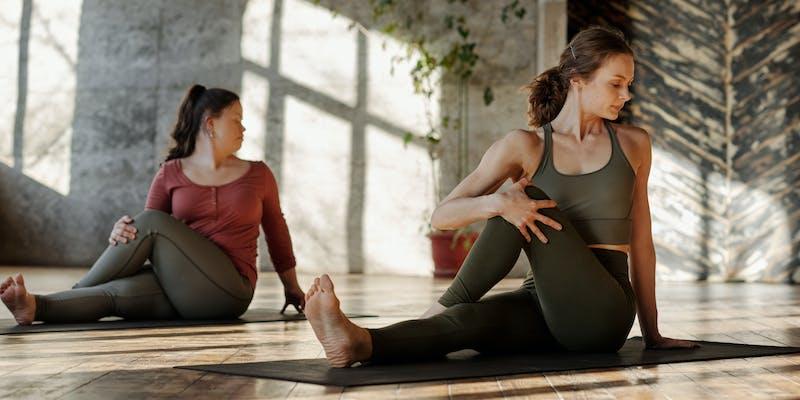
If you suffer from back discomfort or limited movement, try doing spinal twists, a fantastic release exercise. Avoid twisting if you suffer from back or disk issues that might worsen. It's strength training for the erector spine, glutes, and lower back.
.
- Lie on your back with your legs crossed and your left leg resting.
- Put your left foot on the ground near your right knee and cross your left leg over your right leg farther, making your left knee point upward.
- Lean slightly to the left by bending your left shoulder and pushing through your left leg.
- Take it easy for a while. Please maintain this posture for thirty seconds.
- Proceed to the other side.
Bound Angle
Anyone, regardless of gender with ankle or leg issues, may benefit from this hip-opening exercise. Less strain on the hip flexors and inner thigh muscles is a benefit. Working muscles for these ankle stretching exercises are glutes, adductors, and hip flexors.
- With your back straight, sit on the floor. Sole-to-sole contact must be maintained.
- Put your palms on your feet and straighten your back. Move your weight forward away from your tailbone, and imagine a thread tugging your head towards the ceiling.
- Lean forward while maintaining a flat back and pull your head toward your feet, using your arms for support.
- Take it easy for a while. Maintain this posture for thirty seconds.
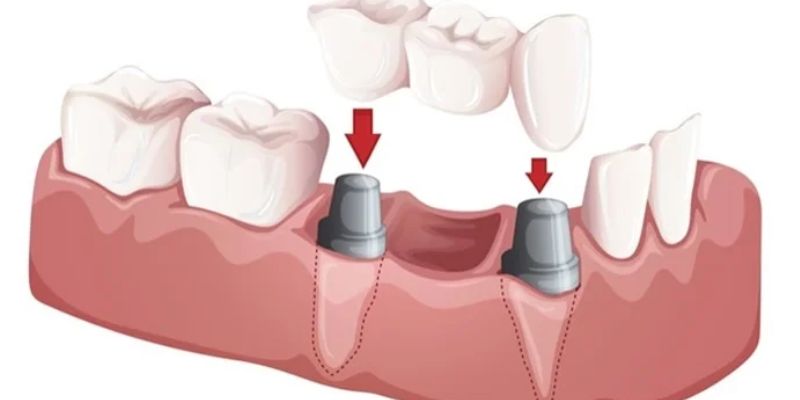
What Is a Dental Bridge

Exploring the Benefits of a Juice Cleanse

How Does Pustular Psoriasis Appear
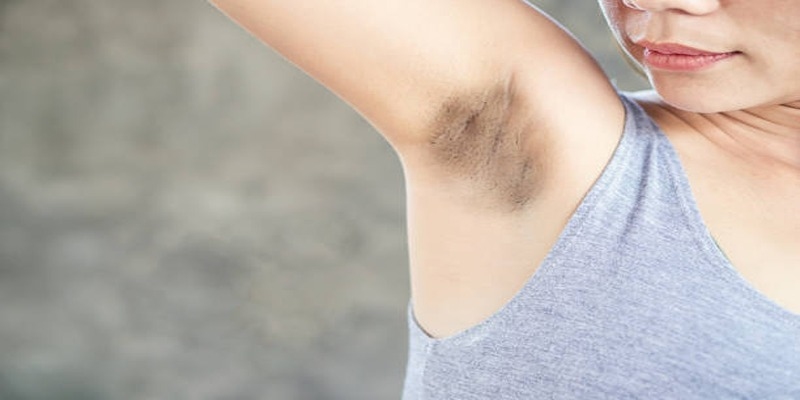
Freedom from Shadows: A Complete Guide to Lightening Dark Armpits
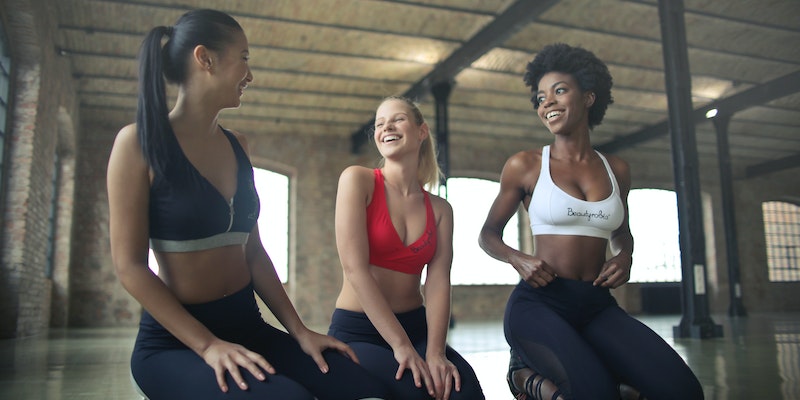
Group Workouts: Why They Yield Better Health Returns

A Comparative Guide: Choosing Between Olive Oil and Coconut Oil in the Kitchen

Forehead Pimples? 5 Reasons Why They Keep Appearing
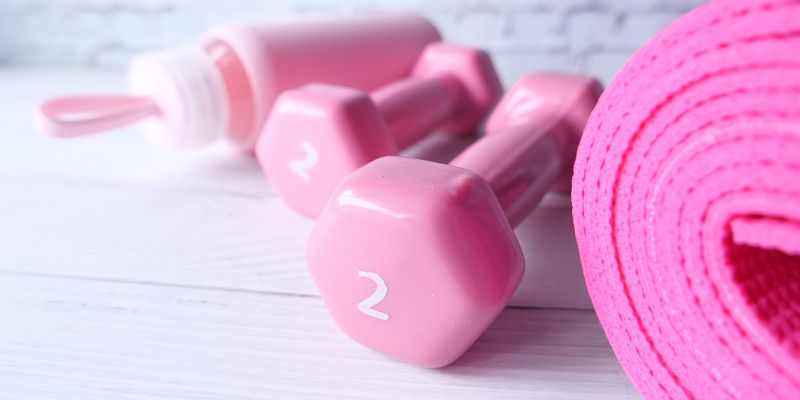
What Does 'Moderate-Intensity Exercise' Mean Anyway: An Overview

Crucial Insights on Lead Poisoning: Causes, Solutions, and Prevention

What are The Three Levels of Autism

What are the signs of coming to the end of menopause?
